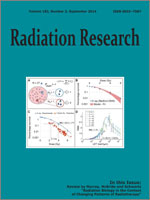The last decade has witnessed a revolution in the clinical application of high-dose “ablative” radiation therapy. Initially this approach was limited to the treatment of brain tumors, but more recently we have seen its successful extension to tumors outside the brain, e.g., for small lung nodules. These advances have been driven largely by improvements in image-guided inverse treatment planning that allow the dose per fraction to the tumor to be increased over the conventional 2 Gy dose while keeping the late normal tissue complications at an acceptable level by dose limitation. Despite initial concerns about excessive late complications, as might be expected based on dose extrapolations using the linear-quadratic equation, these approaches have shown considerable clinical promise. Our knowledge of the biological consequences of high-doses of ionizing radiation in normal and cancerous tissues has lagged behind these clinical advances. Our intent here is to survey recent experimental findings from the perspective of better understanding the biological effects of high-dose therapy and whether they are truly different from conventional doses. We will also consider the implications of this knowledge for further refining and improving these approaches on the basis of underlying mechanisms.
How to translate text using browser tools
16 July 2014
Radiation Biology in the Context of Changing Patterns of Radiotherapy
David Murray,
William H. McBride,
Jeffrey L. Schwartz
ACCESS THE FULL ARTICLE

Radiation Research
Vol. 182 • No. 3
September 2014
Vol. 182 • No. 3
September 2014




